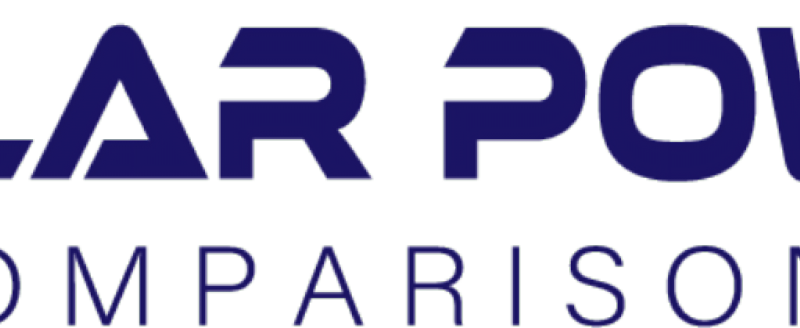
Understanding the costs associated with solar panel installations is crucial for individuals and businesses considering transitioning to solar energy. Compare Solar power offers numerous benefits, including reduced electricity bills, environmental sustainability, and energy independence. However, the upfront costs of installing solar panels can vary significantly based on various factors. Therefore, conducting a comparative analysis of solar panel costs helps stakeholders make informed decisions about their investments in renewable energy.
The purpose of this comparative analysis is to provide readers with a comprehensive understanding of solar panel costs. By examining the different factors influencing costs and comparing various aspects of solar panel installations, readers will gain insights into the financial implications of adopting solar energy. This analysis aims to elucidate the key considerations involved in assessing the affordability and long-term value of solar power systems.
Types of Solar Panel Costs
The initial installation costs of solar panels encompass expenses related to purchasing equipment, such as solar panels, inverters, mounting hardware, and wiring. Additionally, labor costs associated with system design, permitting, and installation contribute to the total upfront investment. Factors such as the size of the solar system, the complexity of the installation, and regional labor rates influence initial installation costs.
A. Operational and Maintenance Costs
While solar panels have minimal ongoing operational costs compared to traditional energy sources, maintenance expenses are still a consideration. Routine maintenance tasks may include cleaning the panels, inspecting for damage or debris, and ensuring proper functioning of the system components. Additionally, homeowners may opt for monitoring services to track system performance, which may incur additional fees.
B. Long-term Savings
Despite the initial investment, solar panels offer long-term savings through reduced electricity bills. By generating their own electricity from sunlight, solar panel owners can offset or eliminate their reliance on grid-supplied power, thereby reducing utility expenses. Over the lifespan of the solar panels, which typically ranges from 25 to 30 years, the cumulative savings from reduced energy costs can outweigh the initial installation expenses.
Also check. Embracing Solar Power: Best Solar Panels in Pakistan
Factors Influencing Solar Panel Costs
Solar power comparison costs are influenced by type and quality, with monocrystalline panels being pricier due to higher efficiency. System size impacts expenses, as larger setups require more components but offer potential long-term savings. Geographic location affects energy output and costs, with sunnier regions being more cost-effective. Inverters and mounting hardware contribute to installation costs, with variations in pricing based on capacity and brand. Labor costs cover various tasks like design and installation, with rates dependent on factors like market conditions and project complexity. These factors collectively determine the overall expenses of solar panel installations.
Comparative Analysis of Solar Panel Costs
Comparing the costs of different types of solar panels allows consumers to evaluate the trade-offs between upfront expenses and long-term performance. While monocrystalline panels may have higher initial costs, their superior efficiency and longevity may result in greater savings over time compared to polycrystalline or thin-film panels.
Regional cost variations reflect differences in factors such as labor rates, permitting requirements, and market competition. Conducting a comparative analysis of solar panel costs across different regions enables consumers to identify cost-saving opportunities and make informed decisions about where to invest in solar energy.
Calculating the total cost of ownership (TCO) involves considering all expenses associated with owning and operating a solar power system over its lifespan. This includes initial installation costs, ongoing maintenance expenses, energy savings, and potential revenue from selling surplus electricity back to the grid. By analyzing TCO, consumers can assess the overall affordability and value proposition of solar energy investments.
Comparing the return on investment (ROI) of different solar panel options helps consumers evaluate the financial feasibility and profitability of solar energy projects. ROI calculations take into account factors such as upfront costs, energy savings, incentives, and the time it takes to recoup the initial investment. By comparing ROI across various solar panel systems, consumers can identify the most cost-effective and lucrative investment opportunities.
Case Studies and Real-world Examples
Case studies of residential solar panel installations provide real-world examples of costs, savings, and experiences associated with adopting solar energy. These case studies may highlight factors such as system size, location, financing options, and return on investment, offering valuable insights for homeowners considering solar power.
Similarly, case studies of commercial solar projects showcase the financial and operational benefits of solar energy for businesses, institutions, and organizations. These case studies may focus on cost savings, environmental impact, energy resilience, and corporate sustainability goals achieved through solar installations.
Understanding the Value Proposition
Understanding the value proposition of solar energy involves balancing upfront costs with long-term savings and benefits. While solar panel installations require an initial investment, the potential for significant energy savings, reduced utility expenses, and environmental benefits over the lifespan of the system often outweighs the upfront costs.
In addition to financial considerations, adopting solar energy offers environmental and sustainability benefits, including reduced greenhouse gas emissions, reliance on fossil fuels, and environmental degradation. By considering the environmental impact of solar energy, consumers can make choices that align with their values and contribute to a cleaner, more sustainable future.
Tips for Optimizing Solar Panel Costs
Maximizing the efficiency of solar power systems helps optimize energy production and reduce costs per kilowatt-hour. This may involve selecting high-efficiency solar panels, optimizing system design and orientation, and minimizing shading or obstructions that reduce sunlight exposure.
A. Exploring Financing and Incentive Options
Exploring financing and incentive options can help mitigate upfront costs and improve the affordability of solar panel installations. Financing options such as solar loans, leases, power purchase agreements (PPAs), and government incentives such as tax credits, rebates, and feed-in tariffs can significantly reduce the financial barriers to adopting solar energy.
B. Choosing Reputable Installers and Equipment
Selecting reputable installers and high-quality equipment is essential for ensuring the reliability, performance, and longevity of solar power systems. Working with experienced and certified installers reduces the risk of installation errors and ensures compliance with industry standards and regulations. Additionally, investing in reliable equipment from reputable manufacturers helps minimize maintenance issues and maximize energy production over the lifespan of the system.
Conclusion
Understanding solar panel costs through comparative analysis is vital for informed decision-making. Factors like panel type, system size, and location significantly influence expenses. Recommendations include thorough research, obtaining quotes, and prioritizing quality equipment. Future advancements in technology and policies will further shape solar costs. By understanding these complexities, individuals and businesses can embrace the benefits of renewable energy for a sustainable future.








